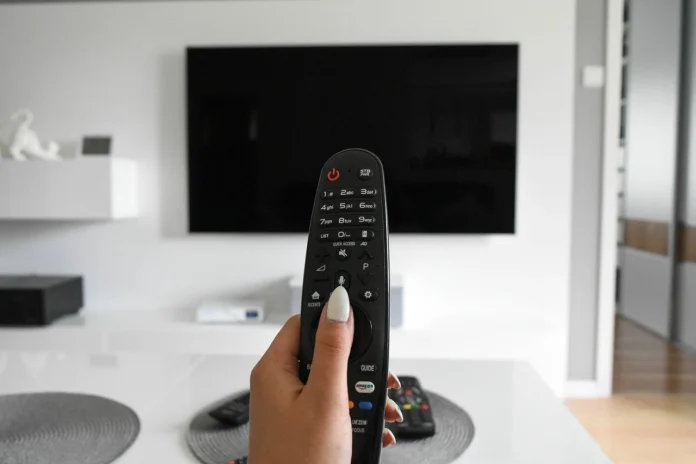With the rise of high-definition (HD) and 4K content, ensuring your TV aerial is up to the task is more important than ever. Whether you’re a film buff or a sports enthusiast, the clarity and detail offered by HD and 4K can transform your viewing experience. But before you settle down with your popcorn, let’s make sure your aerial is ready to deliver the goods.
Understanding HD and 4K Broadcasts
HD and 4K broadcasts offer a significant leap in picture quality compared to standard definition. HD typically offers a resolution of 1920×1080 pixels, while 4K, also known as Ultra HD, boasts a resolution of 3840×2160 pixels. This means sharper images, more vibrant colours, and an overall more immersive experience.
However, to enjoy these benefits, your TV aerial must be capable of receiving the necessary signals. Not all aerials are created equal, and some may struggle to pick up the higher frequency signals required for HD and 4K broadcasts.
Assessing Your Current Aerial
Before you rush out to buy a new aerial, it’s worth assessing your current setup. If your aerial is relatively new and was installed in the last few years, it might already be compatible with HD and 4K signals. Older aerials, especially those installed before the digital switchover, may not be up to the task.
Look for any visible signs of wear and tear, such as rust or bent elements. These can affect the aerial’s performance and might necessitate a replacement. Also, consider the type of aerial you have. Outdoor aerials generally provide better reception than indoor ones, particularly in areas with weaker signals.
Checking Signal Strength
Signal strength is crucial for receiving HD and 4K content. Weak signals can result in pixelation, freezing, or even a complete loss of picture. Fortunately, checking your signal strength is relatively straightforward.
Most modern TVs have a built-in signal strength meter. You can usually find this in the settings menu under the signal or channel options. If your signal strength is consistently low, it might be time to reposition your aerial or consider an upgrade.
Repositioning Your Aerial
Sometimes, simply repositioning your aerial can make a world of difference. The goal is to point your aerial towards the nearest transmitter. In the UK, there are several websites and apps that can help you locate your nearest transmitter and determine the best direction for your aerial.
Keep in mind that obstacles such as buildings, trees, and hills can interfere with your signal. Elevating your aerial or moving it to a different location might help improve reception. If you’re using an indoor aerial, try placing it near a window or higher up in the room.
Upgrading Your Aerial
If repositioning doesn’t do the trick, it might be time to consider an upgrade. When shopping for a new aerial, look for one that specifically mentions compatibility with HD and 4K signals. These aerials are designed to handle the higher frequencies required for these broadcasts.
Outdoor aerials are generally more effective than indoor ones, especially in areas with weaker signals. If you’re unsure which aerial to choose, consulting with a professional installer can be a wise investment. They can assess your specific needs and recommend the best solution for your location.
Ensuring Proper Installation
Proper installation is key to getting the best performance from your aerial. If you’re confident in your DIY skills, you might choose to install the aerial yourself. However, if you’re unsure, hiring a professional can save you time and hassle.
A professional installer will ensure your aerial is securely mounted and correctly aligned with the transmitter. They can also help with any necessary cabling and ensure your TV is properly tuned to receive HD and 4K channels.
Considering Signal Boosters
In some cases, a signal booster might be necessary to improve reception. These devices amplify the signal received by your aerial, making it easier for your TV to pick up HD and 4K broadcasts. However, it’s important to use them sparingly, as over-amplification can cause distortion.
Signal boosters are particularly useful in areas with weak signals or if you’re splitting the signal to multiple TVs. If you’re considering a booster, it’s best to consult with a professional to ensure it’s the right solution for your situation.
Final Thoughts
Ensuring your TV aerial is ready for HD and 4K content doesn’t have to be a daunting task. By assessing your current setup, checking signal strength, and considering upgrades or repositioning, you can enjoy the stunning clarity and detail that HD and 4K have to offer.
Whether you’re watching the latest blockbuster or cheering on your favourite team, a well-functioning aerial is your ticket to a top-notch viewing experience. So, take the time to ensure your aerial is up to the task, and enjoy the show!
Help keep news FREE for our readers
Supporting your local community newspaper/online news outlet is crucial now more than ever. If you believe in independent journalism, then consider making a valuable contribution by making a one-time or monthly donation. We operate in rural areas where providing unbiased news can be challenging. Read More About Supporting The West Wales Chronicle


























This is such an important reminder! With HD and 4K content becoming the norm, having a TV aerial that can handle the demand is crucial for getting the most out of your viewing experience. There’s nothing worse than settling in for a big game or a movie night only to be met with pixelated or fuzzy visuals. Making sure your aerial is up to the task is definitely worth the effort—it’s like upgrading your entire entertainment setup without buying a new TV. Great advice!